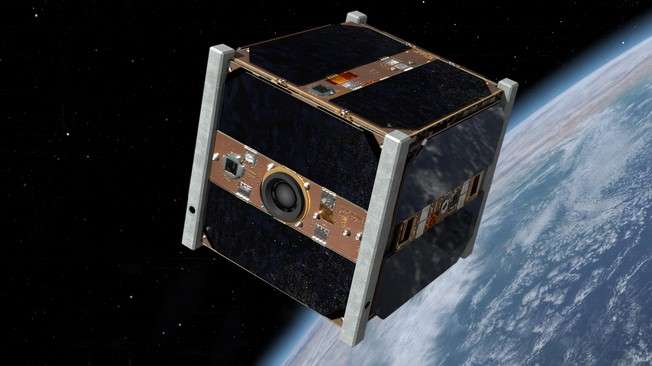SwissCube—seven years in space and still active

The little Swiss satellite was launched on 23 September 2009 and continues to send back regular reports. That ranks it among the oldest nanosatellites that are still active. Enthusiasts will be able to follow the satellite using a soon-to-be released mobile app.
It has circled the Earth nearly 38,000 times, sent back 150 million reports, transmitted dozens of megabytes of data and stood up surprisingly well to the damaging effects of solar particles on the electronic components. SwissCube, the little satellite developed by EPFL in partnership with several other specialized universities, is celebrating seven years in space today. EPFL's Space Engineering Center, eSpace, is planning a series of birthday events: a reunion of the satellite's designers, conferences, personal accounts, previously unseen videos, and the retransmission of one of the satellite's overhead passes. Plus, a mobile app will soon be available for those interested in keeping tabs on the satellite.
There is good reason to celebrate. This little CubeSat – measuring only 10 cm x 10 cm – is now playing with the big boys: it's the oldest European satellite in its category to still be active. Only four other CubeSats have lasted longer, and they are all of Japanese design. The world record holder has been in orbit for 13 years.
Early on, no one thought SwissCube had the stamina. When it was launched, it was expected to function for about four months. And it even got off to a bad start: when it reached orbit it started spinning and couldn't be used until it stabilized several months later.
Risky decisions
SwissCube's long lifespan is a tribute to the 200 or so students who worked in succession on the project under the guidance of Muriel Richard, an engineer at eSpace. Over the years, a number of decisions that were considered highly risky at the time proved to be judicious. This includes the use of low-cost components that had never before been used in space.
The little satellite, orbiting at an altitude of 720 kilometers and a speed of nearly 7,500 meters per second – 28,000 kilometers per hour – still regularly transmits its position, system status and images back to Earth. That said, the satellite had to be completely rebooted on two separate occasions in recent years owing to system failures. The CubeSat rebooted properly both times, offering further proof of its sound design.
It is now starting to show more serious signs of fatigue. "It's probably nearing the end of its travels," said Simon Dandavino, the executive director of eSpace. "Its communications system is less responsive, and its data transmission capability is faltering."
SwissCube should eventually be picked up by CleanSpace One, the space cleanup satellite currently being built at eSpace. The purpose of that project is to develop solutions to the problem of space debris and demonstrate the feasibility of applying them in the space environment. SwissCube will therefore serve experimental purposes up to the very end.
An app, never-before-seen images and a replica
SwissCube's birthday celebration has a lot in store for its fans. A mobile app called Elveti mobile will soon be released, allowing users to track SwissCube and receive live data from it. The app will also work with other satellites like CleanSpace One. Enthusiasts will also be able to see images of SwissCube released by the Astronomical Institute of the University of Bern (AIUB), which was able to film the small and fast-moving satellite from the ground using the ZIMLAT telescope at Zimmerwald Observatory.
Finally, an exact replica of the little satellite is currently being made. It will be put on display, together with information on the satellite's systems and history, in November at the Swiss Museum of Transport in Lucerne.
More information: For more information: swisscube.epfl.ch/ , espace.epfl.ch/
Provided by Ecole Polytechnique Federale de Lausanne




















